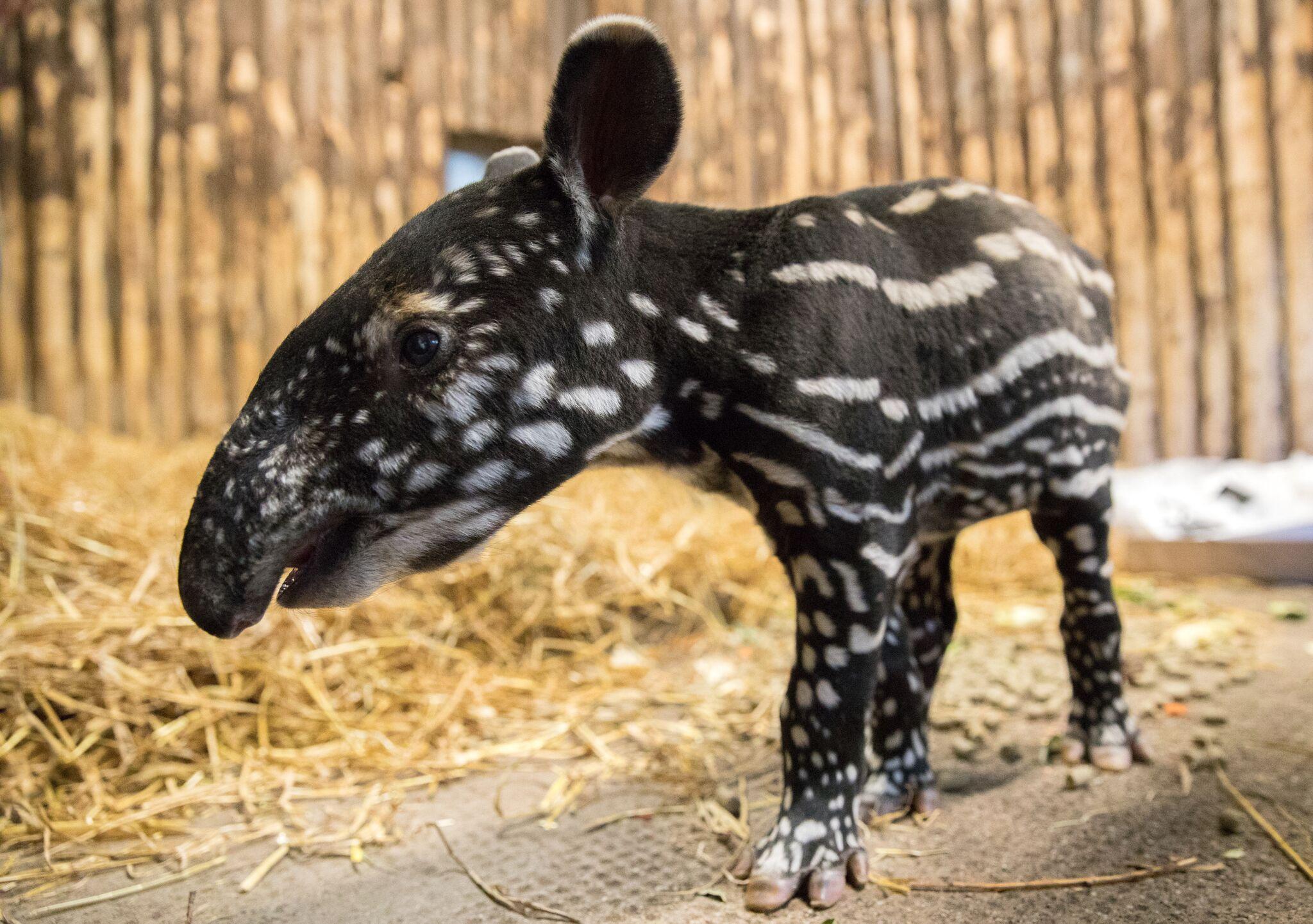Endangered Malay tapir born at Edinburgh Zoo
'Currently Maya is staying very close to mum and she is doing well'

A Malay tapir – a species that is endangered in the wild – has been born at Edinburgh Zoo.
The female calf, named Maya, was born to mother Sayang and father Mowgli and has been finding her feet.
There are believed to be fewer than 2,500 left in the wild, partly due to their habitats being turned into palm oil plantations.
Karen Stiven, the zoo’s senior hoofstock keeper, said: “Currently Maya is staying very close to mum and she is doing well.
“She has the signature brown fur and white markings that all baby tapirs are born with, which helps to provide camouflage in the forest. She will begin to get her adult colouration at around three months old.
“Sayang is a great mum with lots of practice under her belt now and she really knows the ropes. Tapirs are pregnant for around 13 months so it is great to finally see another healthy calf being born.”
Maya’s birth is part of the European Endangered Species Breeding Programme.
“The programme has a high demand for female tapirs to help create a diverse safety-net population to ensure that the species does not go extinct in the wild,” Ms Stiven added.
The Malay tapir, also known as the Asian tapir, is the largest of four tapir species and is the only Old World tapir. It is native to the rainforests of Burma, Malaysia, Sumatra and Thailand.
They have an extended nose and upper lips which form a prehensile proboscis, used to grab leaves.
According to the International Union for Conservation of Nature, the Malay tapir is endangered with its population declining mainly because of loss and fragmentation of habitat, hunting, roadkills and being caught in snares meant for other animals.
“Population declines are estimated to have been greater than 50 per cent in the past three generations (36 years) driven primarily by large-scale conversion of tapir habitat to palm oil plantations and other human-dominated land-use,” the IUCN says.
“The rate of reduction in population is inferred to be proportional to the reduction of the tropical rainforest area in southeast Asia over the same period.
“However the population decline is estimated to be even higher due to indirect threats (roads, hunting). Furthermore there are estimated to be less than 2,500 mature individuals remaining, with an estimated continuing decline of at least 20 per cent in the next two generations (24 years).”
Join our commenting forum
Join thought-provoking conversations, follow other Independent readers and see their replies
Comments
Bookmark popover
Removed from bookmarks